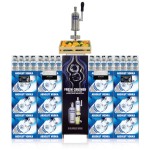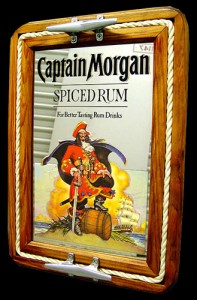In keeping with the theme of the last few postings on sales promotion, dealer loaders and assorted point of sale issues, I thought I would continue that theme particularly in light of the holiday season. The Advertising and Promotion Awards in the Nov/Dec issue of Beverage Dynamics also prompted me to address this subject.
First, for the uninformed, the Urban Dictionary defines Tsotchke as “free goods given by companies to consumers, buyers, trade-show participants or other target audiences to promote brand recognition or customer loyalty.”
So, here are some points of view on the subject including some picks and pans from yours truly…
The most consistent and impactful POS has to go to the Absolut folks, particularly their multi-case floor displays. In fact, Beverage Dynamics gave it 1st place for 2010. No wonder, since Carol Giaconelli at Pernod Ricard (and a Seagram alumnae) is among the most imaginative sales promotion people I know. Even after working on Absolut for many years and for different regimes, Carol maintains her creative edge.
While I’m on the subject, I suppose the Hall of Fame for floor displays with loader items has to be the Captain Morgan mirror. According to Sam Ellias, the CM guru back in the day, that promotion was a prominent reason for the brand’s early success. Apparently, all a sales person had to do was to show the mirror in order to get the question, “how many cases do I need to buy?”
I managed to find a photo online. Despite it’s popularity at the time, you can still get one on eBay for under $25.
Now to the pans…
There are lots of awards in Beverage Dynamics for co-packs, gift packs and cartons/tins. The so-called value added packaging. Sorry, but I still don’t get it. In this environment manufacturers expect to entice consumers with Tsotchkes? If you want to measure effectiveness go to a flea market or eBay after the holidays and you’ll find glasses, shakers and pitchers galore. I wouldn’t be surprised if most of them came from retailers.
The Hall of Shame best/worst sales promotion item of all time came under my watch on behalf of Coyote Tequila. Don’t get me wrong the promotion item was great. It was a back bar pedestal with a howling Coyote as the centerpiece with a bottle on the base. Each time the bartender picked up the bottle a button was triggered and the sound of a howling Coyote was heard. Very cool. Very effective.
Just one small problem — Coyote Tequila tasted like crap. As the saying goes, “I wouldn’t drink it with your mouth.”
And now, dear reader, I have two questions for you.
Care to share your nominees for the best and worst promotions you’ve seen now or in the past? Either hit the comment button or send me an email.
Also, as I went through the 40 advertising and promotion awards by Beverage Dynamics, there were lots of first, second or third place winners from many major suppliers — Brown Forman, Heaven Hill, Skyy/Campari, Pernod, Bacardi and others. None were from Diageo. I wonder why? It could be that their market position and brand shares allows them to spend in other ways. That would explain the dearth of POS recognition. But no ads, traditional or digital, made it either. Huh.
As we used to say in Brooklyn, wait ‘til next year.


